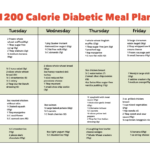Embark on a culinary journey where deliciousness and health intertwine! “Flavorful and Guilt-Free: Recipes for Every Diabetic’s Table” unveils a world of vibrant, satisfying meals designed specifically for those managing diabetes. Imagine savoring breakfast delights, hearty lunches, and delightful dinners – all crafted with carefully selected ingredients to keep blood sugar levels balanced. This isn’t about deprivation; it’s about discovering the joy of flavorful, manageable eating that nourishes both body and soul. Prepare to transform your perception of diabetic-friendly cooking.
This comprehensive guide provides a wealth of recipes, categorized for ease of use, and includes detailed instructions, nutritional information, and helpful tips for successful meal planning. Learn how to substitute ingredients to personalize each dish to your tastes and dietary needs. We’ll explore the science behind glycemic index and portion control, empowering you to make informed choices that support your well-being. Get ready to rediscover the pleasure of cooking and eating, without compromise.
Introduction
Embark on a culinary journey where deliciousness and health intertwine! This book, “Flavorful and Guilt-Free: Recipes for Every Diabetic’s Table,” is your passport to a world of vibrant, satisfying meals that won’t compromise your well-being. Managing diabetes doesn’t mean sacrificing flavor; it’s about embracing a mindful approach to eating that nourishes your body and delights your taste buds. We’ll explore how to create meals that are both delicious and perfectly suited to support your health goals.
A diabetic-friendly diet offers numerous benefits extending far beyond blood sugar control. It can contribute to weight management, reducing the risk of heart disease, improving energy levels, and enhancing overall well-being. By focusing on whole, unprocessed foods, you’ll provide your body with the essential nutrients it needs to thrive. This approach is not about restriction, but about making informed choices that support a healthier, happier you.
Three Tips for Successful Diabetic Meal Planning
Effective meal planning is crucial for managing diabetes. Consistency and thoughtful preparation are key to success. Here are three practical tips to guide your culinary adventures:
| Tip | Description | Example | Visual |
|---|---|---|---|
| Prioritize Whole Foods | Focus on fruits, vegetables, lean proteins, and whole grains. These foods are naturally rich in fiber, vitamins, and minerals, helping to regulate blood sugar levels and provide sustained energy. | A vibrant salad bursting with colorful bell peppers, spinach, grilled chicken breast, and a light vinaigrette; a hearty bowl of lentil soup brimming with vegetables. | Imagine a colorful still life: deep green spinach contrasting with the fiery red of bell peppers, the golden hue of lentils, and the glistening sheen of a healthy vinaigrette. The textures are varied – the crispness of the vegetables, the satisfying chew of the lentils, the tenderness of the chicken. |
| Control Portion Sizes | Be mindful of how much you’re eating. Using smaller plates and measuring food can help you stay within recommended serving sizes. | Using a smaller salad plate instead of a dinner plate for a main course; measuring out a half-cup of cooked brown rice. | Picture a neatly portioned meal on a smaller plate. The food is arranged attractively, showcasing the colors and textures. The portion size is clearly manageable and appropriate. |
| Balance Carbohydrates, Proteins, and Fats | Include a balance of these macronutrients in each meal to help stabilize blood sugar levels and promote satiety. | A meal consisting of grilled salmon (protein), a small serving of quinoa (carbohydrate), and steamed broccoli (vegetables and fiber). | Envision a plate where the salmon’s pinkish-orange hue is complemented by the creamy white of the quinoa and the vibrant green of the broccoli. Each element contributes its unique texture and flavor, creating a balanced and appealing meal. |
Key Benefits of a Diabetic-Friendly Diet
The advantages of adopting a diabetic-friendly eating plan are multifaceted and significantly impact overall health and well-being.
| Benefit | Description |
|---|---|
| Improved Blood Sugar Control | By focusing on low-glycemic index foods and controlling portion sizes, you can help maintain stable blood sugar levels, reducing the risk of complications. Imagine a smooth, steady line on a blood glucose monitor graph, representing consistent and healthy sugar levels. |
| Weight Management | A diabetic-friendly diet often supports weight loss or maintenance, which is crucial for managing diabetes. Visualize a healthy weight range, reflecting a balanced and sustainable lifestyle. |
| Reduced Risk of Heart Disease | By incorporating heart-healthy foods like fruits, vegetables, and lean proteins, you can reduce your risk of cardiovascular complications. Picture a strong, healthy heart, pumping blood efficiently throughout the body. |
| Increased Energy Levels | Consistent blood sugar levels and proper nutrition translate to sustained energy throughout the day. Imagine a feeling of vitality and alertness, a positive and energetic outlook on life. |
Breakfast Recipes
Starting your day with a delicious and healthy breakfast is crucial for managing diabetes. These recipes are designed to be both flavorful and low in glycemic index, providing sustained energy without the blood sugar spikes. They are also quick and easy to prepare, perfect for busy mornings.
Three Diabetic-Friendly Breakfast Recipes
The following recipes offer a variety of flavors and textures, ensuring you won’t get bored with your morning meal. Each recipe provides a balanced mix of protein, healthy fats, and complex carbohydrates for optimal blood sugar control. The nutritional information is approximate and may vary slightly depending on the specific ingredients used.
- Berry Quinoa Breakfast Bowl: This vibrant bowl combines the protein and fiber of quinoa with the antioxidant richness of berries. Imagine a bed of fluffy cooked quinoa, speckled with juicy blueberries, raspberries, and a sprinkle of chopped almonds. A drizzle of unsweetened almond milk adds creaminess and extra nutrients.
- Cook 1/2 cup quinoa according to package directions.
- In a bowl, combine the cooked quinoa with 1/2 cup mixed berries (blueberries, raspberries, strawberries).
- Top with 1 tablespoon chopped almonds and 2 tablespoons unsweetened almond milk.
Nutritional Information (per serving): Approximately 250 calories, 40g carbohydrates, 5g protein, 5g fat. Glycemic Index: Low to Medium.
- Savory Spinach and Egg Scramble: A protein-packed and satisfying option, this scramble provides a hearty start to the day. Picture fluffy scrambled eggs interwoven with vibrant green spinach, the subtle tang of feta cheese, and a hint of black pepper.
- Sauté 1 cup chopped spinach in a pan with a light spray of olive oil until wilted.
- Whisk 2 eggs with a splash of milk and a pinch of salt and pepper.
- Pour the egg mixture over the spinach and cook until set.
- Crumble 1 ounce feta cheese over the scramble.
Nutritional Information (per serving): Approximately 200 calories, 5g carbohydrates, 15g protein, 12g fat. Glycemic Index: Low.
- Cinnamon-Spiced Oatmeal with Apples: A warm and comforting option, this oatmeal is naturally sweetened with apples and spiced with cinnamon. Envision a creamy bowl of oatmeal, studded with tender apple chunks, the aroma of warm cinnamon filling the air. A sprinkle of chopped walnuts adds a satisfying crunch.
- Cook 1/2 cup rolled oats according to package directions, using unsweetened almond milk instead of water.
- Stir in 1/2 cup diced apple and 1/2 teaspoon cinnamon.
- Top with 1 tablespoon chopped walnuts.
Nutritional Information (per serving): Approximately 280 calories, 50g carbohydrates, 7g protein, 7g fat. Glycemic Index: Medium.
Glycemic Index Comparison
The glycemic index (GI) measures how quickly a food raises blood sugar levels. The Berry Quinoa Bowl and Savory Spinach and Egg Scramble have lower GI values compared to the Cinnamon-Spiced Oatmeal with Apples. The lower GI options are better choices for individuals with diabetes, as they provide more sustained energy and prevent rapid blood sugar spikes. However, portion control is always crucial. The Oatmeal, while having a higher GI, contains fiber which helps slow down glucose absorption.
Recipe Variations and Tips for Success

Mastering diabetic-friendly cooking involves understanding how to adapt recipes and manage blood sugar effectively. This section provides variations for previously discussed breakfast recipes, addresses common challenges, and offers practical strategies for maintaining balanced blood sugar levels throughout the day. Remember, consistency and mindful eating are key to long-term success.
Adapting Breakfast Recipes
The beauty of cooking lies in its adaptability. Slight modifications can transform a recipe, making it healthier and more enjoyable. Below are some suggestions for adjusting the breakfast recipes presented earlier, ensuring they suit individual preferences and dietary needs.
- Berry Quinoa Breakfast Bowl Variation: Instead of blueberries, try raspberries or strawberries for a different flavor profile. To increase protein, add a scoop of Greek yogurt or a sprinkle of chia seeds. For a creamier texture, use almond milk instead of water when cooking the quinoa.
- Cinnamon Spiced Oatmeal Variation: Experiment with different spices like nutmeg or cardamom to add warmth and complexity. Instead of rolled oats, use steel-cut oats for a chewier texture and higher fiber content. Top with chopped nuts (almonds, walnuts) for added healthy fats and crunch.
- Savory Egg Scramble Variation: Add different vegetables like spinach, mushrooms, or bell peppers for increased nutritional value and vibrant color. Use a non-stick pan to minimize the need for oil. A sprinkle of nutritional yeast can add a cheesy flavor without the added dairy.
Addressing Common Challenges in Diabetic Cooking
Diabetic cooking often presents unique hurdles. Understanding these challenges and finding solutions is crucial for consistent success.
- Managing Carbohydrate Intake: Accurately measuring carbohydrate content is essential. Use a food scale and consult nutritional information panels to track your intake precisely. Prioritize complex carbohydrates like whole grains and legumes over simple carbohydrates like refined sugars and white bread. This helps to regulate blood sugar levels more effectively.
- Balancing Macronutrients: Achieving the right balance of carbohydrates, proteins, and fats is vital. Aim for meals that include lean protein sources (chicken, fish, beans), healthy fats (avocado, nuts, olive oil), and complex carbohydrates (whole grains, vegetables). This approach promotes satiety and prevents blood sugar spikes.
- Avoiding Hidden Sugars: Many processed foods contain hidden sugars, making it essential to read food labels carefully. Be wary of ingredients like high-fructose corn syrup, sucrose, and dextrose. Choose whole, unprocessed foods whenever possible.
Maintaining Consistent Blood Sugar Levels
Maintaining stable blood sugar levels is a key goal in managing diabetes. Several strategies can help achieve this while enjoying delicious and satisfying meals.
- Portion Control: Even healthy foods can impact blood sugar if consumed in excessive amounts. Practice portion control by using smaller plates and measuring food servings. A visual aid, such as a measuring cup, can be helpful.
- Fiber Intake: Fiber slows down the absorption of sugar into the bloodstream, preventing spikes. Include plenty of high-fiber foods like vegetables, fruits, and whole grains in your diet. A colorful plate is a good indicator of sufficient fiber intake.
- Regular Exercise: Physical activity helps regulate blood sugar levels. Aim for at least 30 minutes of moderate-intensity exercise most days of the week. This could be a brisk walk, a bike ride, or any activity that gets your heart rate up.
With “Flavorful and Guilt-Free: Recipes for Every Diabetic’s Table,” managing your diabetes doesn’t mean sacrificing taste or enjoyment. Through a collection of diverse and delicious recipes, we’ve demonstrated how to create satisfying meals that are both healthy and flavorful. From vibrant breakfasts to comforting dinners and guilt-free desserts, this guide empowers you to take control of your diet and enjoy the culinary journey. Remember that consistent meal planning and mindful portion control are key to maintaining balanced blood sugar levels. Embrace this cookbook as your culinary companion, and embark on a path towards a healthier, happier you. Bon appétit!
Key Questions Answered
Can I freeze these recipes?
Many of these recipes freeze well. Check individual recipe notes for specific freezing instructions.
What if I don’t have all the ingredients listed?
Each recipe includes suggestions for substitutions, allowing for flexibility based on your pantry and preferences.
How can I adapt these recipes for different dietary restrictions (e.g., gluten-free)?
Specific gluten-free and other dietary adaptations are addressed within the recipe variations section.
Are these recipes suitable for all types of diabetes?
While these recipes are designed for managing blood sugar, it’s crucial to consult your doctor or a registered dietitian for personalized dietary advice.


